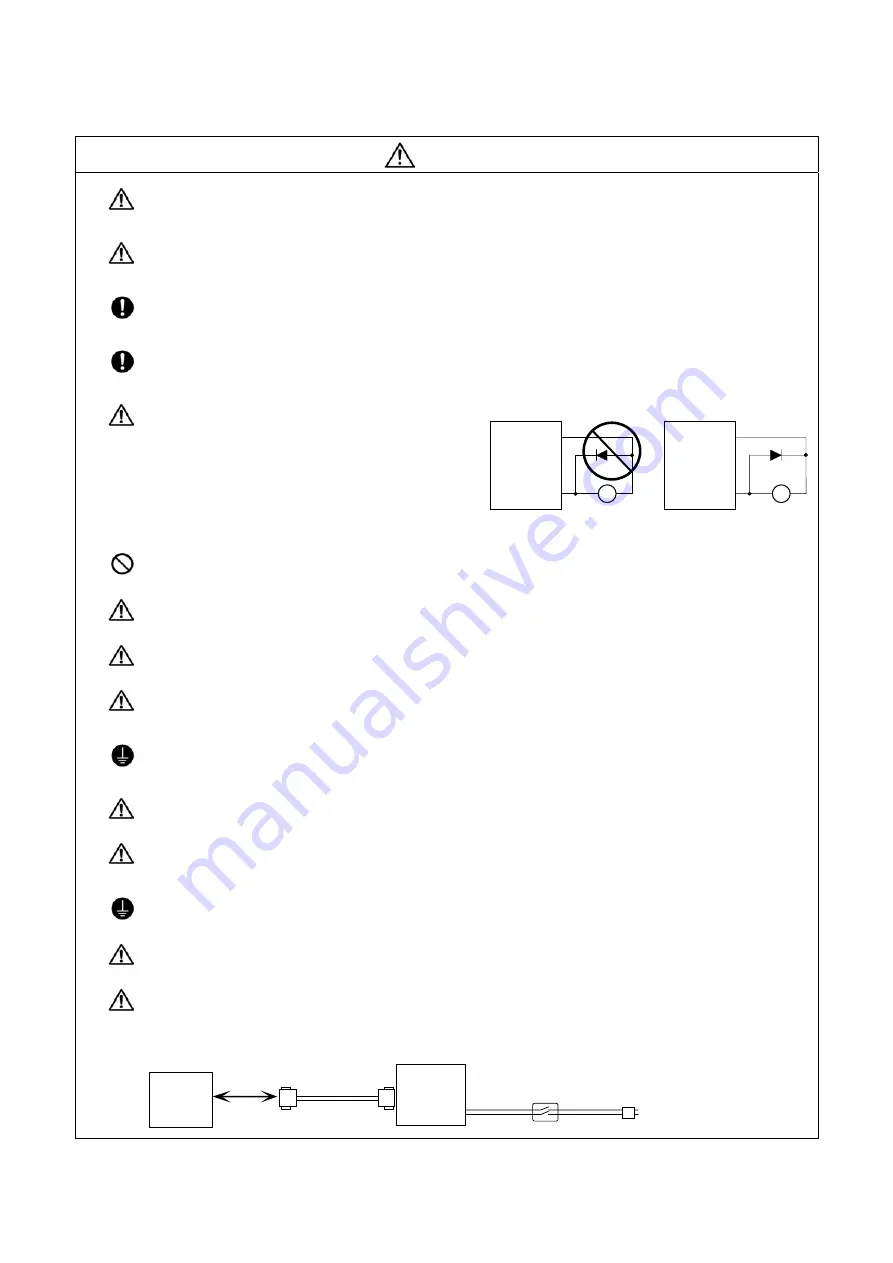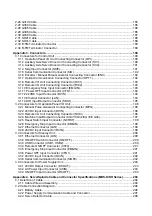
CAUTION
Always install an appropriate breaker per each power supply unit. A breaker cannot be shared for
multiple power supply units.
Do not directly connect a commercial power supply to the motor. Failure to observe this could result
in faults.
When using an inductive load such as relays, always connect a diode in parallel to the load as a
noise countermeasure.
When using a capacitive load such as a lamp, always connect a protective resistor in series to the
load to suppress rush currents.
Do not mistake the direction of the surge
absorption diode to be installed on the DC relay
for the control output signal. If mistaken, the
signal will not be output due to fault in the drive
unit, and consequently the protective circuit,
such as emergency stop, could be disabled.
RA
RA
COM
(24VDC)
Control
output
signal
Drive unit
Drive unit
COM
(24VDC)
Control
output
signal
Do not connect or disconnect the connection cables between each unit while the power is ON.
Do not connect or disconnect the PCBs while the power is ON.
Do not pull the cables when connecting/disconnecting it.
Securely tighten the cable connector fixing screw or fixing mechanism. Insufficient fixing could result
in deviation during operation.
Always treat the shield cables indicated in the Connection Manual with grounding measures such as
cable clamps.
Separate the signal wire from the drive line or power line when wiring.
Use wires and cables whose wire diameter, heat resistance level and bending capacity are
compatible with the system.
Ground the device according to the requirements of the country where the device is to be used.
Wire the heat radiating fins and wires so that they do not contact.
When using the RS-232C device as a peripheral device, caution must be paid for connector
connection/disconnection.
Always use a double-OFF type AC power supply switch on the device side, and connect/disconnect
the connector with the AC power supply on the device side OFF.
NC unit
Device
Switch
AC socket
RS-232C









































